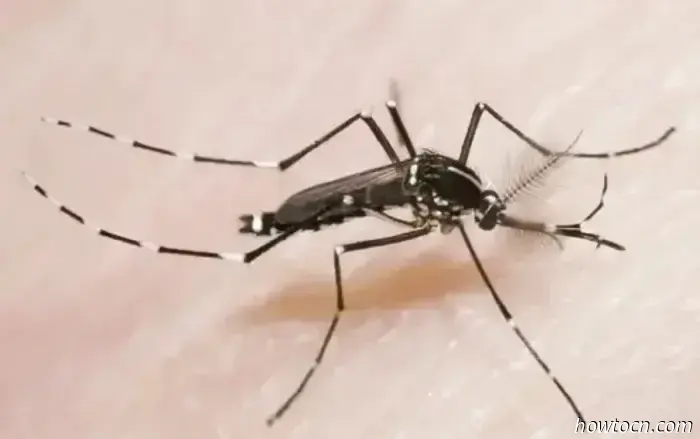
Beijing is an exciting city! Stay updated with our weekend summary of the latest news.
Beijing CDC Issues Warning on Chikungunya
On Tuesday, July 22, the Beijing Center for Disease Prevention and Control (CDC) released a warning concerning the recent chikungunya outbreak in Foshan and the emergence of several imported cases in Beijing. Chikungunya, also referred to as chikungunya fever, is a viral disease transmitted by mosquitoes, primarily seen in Southeast Asia, South Asia, and Africa. According to the WHO, the term chikungunya comes from the Kimakonde language in southern Tanzania, meaning "that which bends up,” which describes the bent posture of those afflicted by severe joint pain.
The chikungunya virus is mainly transmitted via the bites of infected Aedes aegypti and Aedes albopictus mosquitoes. However, the Beijing CDC notes that only Aedes albopictus has been identified as a vector in Beijing. Possible infection sources include both symptomatic and asymptomatic humans, as well as infected non-human primates, but there is no evidence of human-to-human transmission. The Aedes albopictus, commonly known as the Asian tiger mosquito due to its distinct black and white stripes, is most active during the day, particularly between 6 AM-8 AM and 5 PM-7 PM. These mosquitoes are typically found near small, clean bodies of water such as discarded containers, indoor vases, and flowerpot trays.
Symptoms of chikungunya include high fever, joint pain, and rash. While symptoms are usually mild, they can be more severe in high-risk groups like young children, individuals over 65, and those with health issues like hypertension, diabetes, or heart problems. The US CDC reports that approximately 15 to 35 percent of chikungunya cases are asymptomatic. For those showing symptoms, the incubation period typically ranges from 3-7 days, with a variance of 1-12 days. While most cases resolve within about a week, some may experience persistent joint pain lasting weeks, months, or even years. Infection can provide long-lasting immunity.
To prevent chikungunya, minimizing mosquito bites is essential. This includes removing potential breeding sites for mosquito larvae and employing biological, physical, and chemical methods to control mosquito populations. It is advisable for individuals to wear long clothing when outdoors, avoid mosquito breeding areas, and utilize mosquito repellents.
Travelers should exercise caution when visiting areas affected by chikungunya outbreaks and take protective measures against mosquito bites. Upon returning, they should maintain these precautions for an additional two weeks to prevent bringing pathogens like chikungunya, dengue, and Zika into the country.
Anyone experiencing symptoms such as fever, headache, muscle and joint pain, or rash should seek prompt medical attention. It is important to provide details regarding recent travels or any relevant activities or mosquito exposure to assist in diagnosis and treatment.
Here are some “Key Facts” about Chikungunya from the WHO website:
Chikungunya is caused by the chikungunya virus, transmitted to humans by infected mosquitoes, with significant outbreaks primarily reported in the Americas, Asia, and Africa, and occasional smaller outbreaks in Europe.
The symptoms of chikungunya are akin to those of dengue and Zika, making it easy to misdiagnose and complicating accurate infection tracking.
Chikungunya results in fever and severe joint pain, which can be debilitating; other symptoms may include joint swelling, muscle pain, headache, nausea, fatigue, and rash.
There is no specific antiviral treatment for chikungunya virus infections, but antipyretic and analgesic medications (like paracetamol) can help alleviate fever and pain.
Severe symptoms and fatalities from chikungunya are rare, typically occurring in young infants or older adults with existing health issues.
You can find more information on chikungunya on the WHO and US CDC websites. To keep current on the situation in Beijing, follow the Beijing CDC's official WeChat account “北京市疾病预防控制中心” (ID: bjcdcblog).
Scams Targeting the Elderly
Recent reports have highlighted a rise in scams aimed at older adults, including bank card scams and various impersonation schemes.
In Daxing District, a 70-year-old man entered a bank to check the balance on a “poverty alleviation” bank card, which he believed had nearly RMB 5,000,000. Bank staff quickly discovered that the card was fake.
He had fallen victim to a deceptive company that extracted over RMB 1,000 from him through various "processing" and "activation" fees, using fraudulent balance information, a counterfeit app, and claims of rewards. Additionally, he was misled into providing personal details about himself and his family, which might be exploited in future scams.
In another case, a grandmother received a frantic call from someone pretending to be her grandson, claiming he had been in a terrible car



Beijing is an exciting city! Stay updated with our weekend summary of the latest news.